 W
WHittite art was produced by the Hittite civilization in ancient Anatolia, in modern-day Turkey, and also stretching into Syria during the second millennium BCE from the nineteenth century up until the twelfth century BCE. This period falls under the Anatolian Bronze Age. It is characterized by a long tradition of canonized images and motifs rearranged, while still being recognizable, by artists to convey meaning to a largely illiterate population.“Owing to the limited vocabulary of figural types [and motifs], invention for the Hittite artist usually was a matter of combining and manipulating the units to form more complex compositions"
 W
WThe Alaca Höyük bronze standards are a series of bronze objects found among the grave goods in the princely tombs of Alaca Höyük. They are generally understood as cult instruments, probably to be attached to carts.
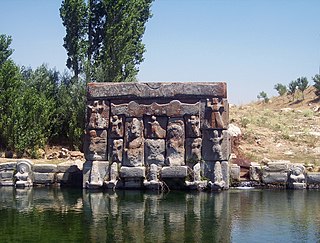 W
WEflatun Pınar is the name given to a spring, which rises up from the ground, and the stone-built pool monument built at the time of the Hittite Empire. The spring lies inside the Lake Beyşehir National Park, 85 km (53 mi) west of Konya, and drains into Lake Beyşehir in central Anatolia at ancient Pisidia region. During the Late Bronze Age, a sacred pool monument was built here in trachyte ashlar masonry dedicated to the sacred spring cult of ancient Hittites. The monument was interpreted as a shrine to Plato during the medieval (Seljuk) period.
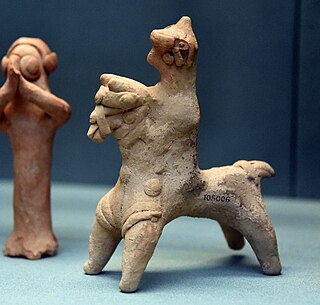 W
WThe Euphrates Handmade Syrian Horses and Riders are zoomorphic clay figurines representing both solely horses or horses provided with riders and dating from the late Iron Age period. These figurines are produced in the Middle Euphrates region and they belong to a production comprehending some anthropomorphic specimens, i.e. the Euphrates Syrian Pillar Figurines (EU_SPF's).
 W
WThe Euphrates Syrian Pillar Figurines (EU_SPF's) are anthropomorphic clay figurines dating from the late Iron Age period and produced in the Middle Euphrates region. These figurines are part of a greater coroplastic production mainly composed of handmade horse-rider figurines, i.e. the Euphrates Handmade Syrian Horses and Riders (EU_HSHR's).
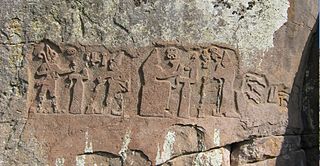 W
WThe Hittite rock relief Fıraktın relief is located roughly 50 km south of Kayseri in the province of the same name in southern Turkey, at Fıraktın on the bank of the Enzel Dere, a tributary of the Zamantı Irmağı. Strabo called the place Dastarkon. Rock reliefs are a prominent aspect of Hittite art.
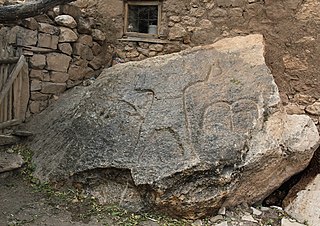 W
WThe Hittite Gökbez relief is a rock relief at Gökbez and dates from the time of the Neo-Hittite states. Rock reliefs are a prominent aspect of Hittite art.
 W
WThe Hanyeri relief is a Hittite rock relief near Hanyeri on the road from Tufanbeyli to Develi in Tufanbeyli district in Adana Province, about 80 km southeast of Kayseri, in Turkey. In Hittite times, the route over the 1960 m high Gezbeli Pass through the Taurus Mountains, which connected the Hittite heartland on the Kızılırmak River with Cilicia, passed by here. At the other end of the pass, to the northwest, is the İmamkullu relief. Rock reliefs are a prominent aspect of Hittite art.
 W
WThe Hemite relief is a Hittite rock relief at Gökçedam in the central district of Osmaniye Province in Turkey, about 20 km northwest of the provincial capital of Osmaniye. Rock reliefs are a prominent aspect of Hittite art.
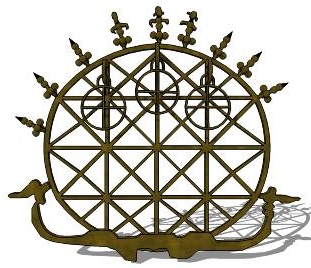 W
WThe Hittite Sun Disk or Hittite Sun Course is an ancient Anatolian symbol dating back to the 20th century BC.
 W
WThe Hüseyindede vases are Early Hittite vases decorated with reliefs, which were found in excavations at Hüseyindede Tepe near Yörüklü in the Turkish province of Çorum. There are fragments of four vases in total. Two of them were nearly complete and were able to be restored. The vases, dated to approximately 1650 BCE, are on display in the Çorum Archaeological Museum.
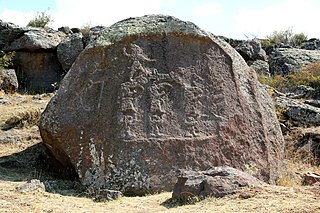 W
WThe Hittite İmamkullu relief is a rock relief near the town of İmamkullu in Tomarza district in Kayseri Province, Turkey. In Turkish it is known as Yazılı Kaya and Şimşekkaya. Rock reliefs are a prominent aspect of Hittite art.
 W
WThe İvriz relief is a Hittite rock relief in south-central Anatolia, located in the town of Aydınkent, formerly called İvriz. The rock relief is on a rock face near the source of the İvriz Suyu, whose water has damaged the relief in modern times. It depicts the late 8th-century BC king Warpalawas and the storm-god Tarhunzas and is accompanied by a hieroglyphic Luwian inscription. Rock reliefs are a prominent aspect of Hittite art.
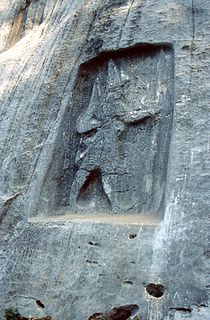 W
WThe Hittite / Luwian Karabel relief is a rock relief in the pass of the same name, between Torbalı and Kemalpaşa, about 20 km from Izmir in Turkey. Rock reliefs are a prominent aspect of Hittite art.
 W
WThe Karasu relief, also known as the Süpürgüç relief after the earlier name of the nearby town of Akbudak, is a rock relief located on a tributary of the Euphrates and derives from the Neo-Hittite period. It depicts a protective god standing on a deer. Rock reliefs are a prominent aspect of Hittite art.
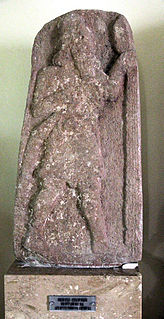 W
WThe Keşlik Stele is a Neo-Hittite monument from northern Tyana, near Niğde discovered in 1962 in southern Turkey, which dates from the 8th century BC.
 W
WLion of Babylon is a stone sculpture that was found in the ancient city of Babylon, Iraq.
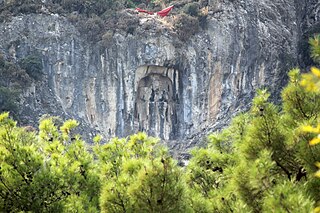 W
WThe Manisa relief, also known as the Akpınar relief and the Cybele relief, is a Hittite rock relief at Akpınar, about 5 km east of the Turkish provincial capital of Manisa above an amusement park on the road to Salihli. It depicts a Hittite divinity. Rock reliefs are a prominent aspect of Hittite art.
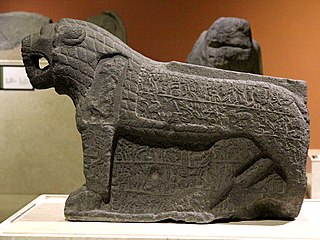 W
WThe Maraş lion is a Late Hittite sculpture of a lion with a hieroglyphic inscription. It was discovered on the citadel of Kahramanmaraş in 1883 and is displayed in the Kahramanmaraş Archaeological Museum. John David Hawkins assigned it the name Maraş 1, while Winfried Orthmann used Maraş B/1. Massive sculptures of lions are a recurrent feature of Hittite art, especially in the Neo-Hittite period.
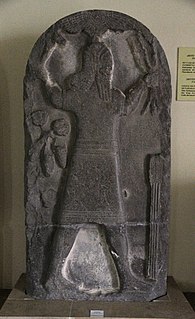 W
WThe Niğde Stele is a Neo-Hittite monument from the modern Turkish city of Niğde, which dates from the end of the 8th century BC.
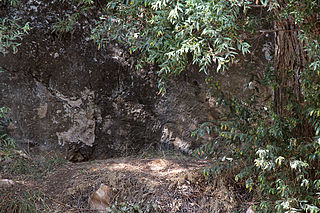 W
WThe two Taşçı reliefs are rock reliefs from the time of the Hittite empire. They are two kilometres south of Taşçı in Develi district, Kayseri Province, Turkey. They are known in Turkish as Yazılı Kaya. Rock reliefs are a prominent aspect of Hittite art.
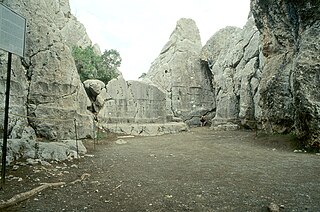 W
WYazılıkaya was a sanctuary of Hattusa, the capital city of the Hittite Empire, today in the Çorum Province, Turkey. Rock reliefs are a prominent aspect of Hittite art, and these are generally regarded as the most important group.